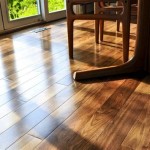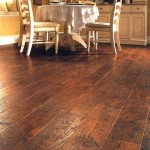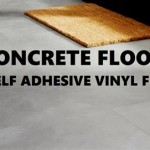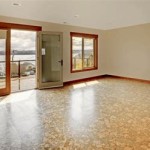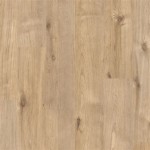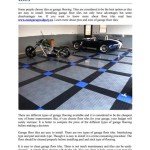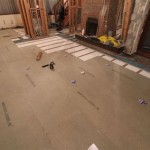Loose Lay Vinyl Flooring: A Practical Choice for Bathrooms
Loose lay vinyl flooring has emerged as a popular option for bathroom renovations and new constructions alike. Its appeal lies in its ease of installation, water resistance, and relatively cost-effective nature. This article aims to provide a comprehensive overview of loose lay vinyl flooring and its suitability for bathroom environments, detailing its properties, benefits, installation process, and potential drawbacks.
Traditional flooring options for bathrooms, such as ceramic tile, require adhesives and grout, leading to more complex and time-consuming installations. These materials can also be susceptible to cracking, staining, and water damage over time, especially if not properly sealed and maintained. Loose lay vinyl flooring presents an alternative that minimizes these issues, offering a simpler and often faster solution for homeowners and contractors.
Understanding Loose Lay Vinyl Flooring
Loose lay vinyl flooring distinguishes itself from other vinyl flooring types through its installation method. Unlike glue-down or click-lock vinyl, loose lay vinyl planks or tiles are designed to stay in place primarily through their weight and high-friction backing. This backing, often made of a rubberized or textured material, creates enough grip against the subfloor to prevent movement under normal foot traffic. The individual planks or tiles are typically thicker than standard vinyl options, contributing to their stability and durability. This additional thickness also plays a role in sound absorption properties, reducing noise transmission within the bathroom.
The construction of loose lay vinyl generally consists of several layers. The top layer is a protective wear layer, designed to resist scratches, scuffs, and stains. This layer often features a UV coating to prevent fading from sunlight exposure. Beneath the wear layer is the decorative layer, which provides the visual appeal of the flooring, mimicking materials like wood, stone, or tile. The core layer provides stability and structural integrity to the plank or tile. Finally, the backing layer, as previously mentioned, is crucial for grip and preventing slippage.
Loose lay vinyl flooring is available in a wide variety of styles, colors, and patterns, allowing homeowners to achieve their desired aesthetic in the bathroom. The realistic textures and patterns can closely resemble natural materials, providing an elevated look without the higher price tag and maintenance requirements. This versatility makes it a suitable choice for various bathroom design styles, from modern and minimalist to traditional and rustic.
Advantages of Loose Lay Vinyl in Bathrooms
The bathroom presents unique challenges for flooring materials, primarily due to high humidity levels and frequent water exposure. Loose lay vinyl flooring offers several advantages in this moisture-prone environment. Its inherent water resistance makes it impervious to spills, splashes, and standing water. Unlike hardwood or laminate flooring, vinyl will not warp, swell, or rot when exposed to moisture. This characteristic significantly reduces the risk of water damage and the associated costs of repair or replacement.
Installation simplicity is another significant benefit. The loose lay installation method eliminates the need for messy adhesives or complex locking mechanisms. This reduces installation time and labor costs. In many cases, homeowners with basic DIY skills can install loose lay vinyl flooring themselves, further saving money. The absence of adhesives also makes it easier to replace individual planks or tiles if they become damaged, without having to remove the entire floor.
Comfort and maintenance are also key considerations. Loose lay vinyl flooring is typically warmer and softer underfoot than tile or stone, providing increased comfort, especially during colder months. The resilient nature of the material also reduces fatigue when standing for extended periods. Cleaning and maintenance are equally straightforward. Regular sweeping or vacuuming is sufficient to remove dust and debris, and occasional mopping with a mild detergent will keep the floor looking its best. The protective wear layer resists stains and spills, making it easy to clean up messes quickly and efficiently.
Installation Considerations for Loose Lay Vinyl in Bathrooms
While loose lay vinyl flooring is known for its ease of installation, proper preparation is essential for a successful outcome. The subfloor must be clean, level, and dry. Any imperfections or unevenness in the subfloor can telegraph through the vinyl, creating an unsightly appearance and potentially compromising the flooring's stability. Existing flooring, such as tile or linoleum, should be removed to ensure a smooth and consistent surface. If the subfloor is concrete, it should be tested for moisture content to prevent issues with mold or mildew growth.
A thin underlayment may be recommended in some cases, particularly over concrete subfloors. Underlayment can provide additional cushioning, sound insulation, and moisture protection. However, it's crucial to choose an underlayment specifically designed for use with loose lay vinyl flooring, as some types may interfere with the flooring's grip and stability. Consult the manufacturer's guidelines for specific recommendations on underlayment requirements.
During installation, it's important to carefully plan the layout of the planks or tiles to minimize waste and ensure a visually appealing pattern. Start by measuring the room and determining the center point. From there, work outwards, aligning the planks or tiles along straight lines. Use a utility knife or specialized vinyl cutter to make accurate cuts around walls, pipes, and other fixtures. Leave a small expansion gap around the perimeter of the room to allow for natural expansion and contraction of the flooring due to temperature and humidity changes. This gap will typically be covered by baseboards or other trim.
While loose lay vinyl is designed to stay in place without adhesives, securing the perimeter of the room with double-sided tape or a flexible adhesive caulk can provide added stability, especially in high-traffic areas or larger bathrooms. This is particularly important along doorways and other points where the flooring may be subjected to increased stress. Follow the manufacturer's instructions for recommended adhesives and application techniques.
Upon completion of the installation, inspect the floor carefully for any gaps, unevenness, or other imperfections. Correct any issues promptly to prevent problems from developing over time. Allow the flooring to acclimate to the room temperature for at least 24 hours before subjecting it to heavy foot traffic or furniture placement. This will help the flooring settle and ensure a secure fit.
Potential Drawbacks and Considerations
Despite its numerous advantages, loose lay vinyl flooring is not without potential drawbacks. One concern is its susceptibility to dents and punctures from heavy objects or sharp items. While the wear layer provides some protection, it's still possible to damage the flooring if not handled with care. Use furniture pads under heavy items and avoid dragging sharp objects across the surface.
While the loose lay installation method is generally straightforward, it's not always suitable for very large or irregularly shaped bathrooms. In these cases, the flooring may be more prone to shifting or lifting, particularly along the edges. Securing the perimeter with adhesive is crucial in such situations to prevent these issues.
The quality of loose lay vinyl flooring can vary significantly depending on the manufacturer and the price point. Lower-quality options may be thinner, less durable, and more prone to damage. It's important to choose a reputable brand and a product that meets the specific needs of your bathroom. Consider the thickness of the wear layer, the stability of the core layer, and the quality of the backing material when making your decision. Reading reviews and consulting with flooring professionals can help you make an informed choice.
Compared to other flooring options such as tile or hardwood, loose lay vinyl may not offer the same level of long-term durability or resale value. While it's a cost-effective and practical choice for many homeowners, it may not be the best option for those seeking a high-end or permanent flooring solution. Consider the overall value of your home and your long-term plans when making your flooring decision.
Finally, proper maintenance is essential to prolong the life and appearance of loose lay vinyl flooring. Avoid using harsh chemicals or abrasive cleaners, as these can damage the wear layer. Clean up spills promptly to prevent staining, and use walk-off mats at entrances to reduce the amount of dirt and debris tracked onto the floor. Regular maintenance will help keep your loose lay vinyl flooring looking its best for years to come.

How To Install Sheet Vinyl Floor Decor Adventures

Luxury Vinyl Flooring Is A Great Choice For Chic Bathrooms

Dos And Don Ts For Installing Vinyl Plank Floors In The Bathroom Advice Homeowners

Installing Vinyl Plank Flooring Lifeproof Waterproof Rigid Core Sustain My Craft Habit

Luxury Vinyl Flooring

Installing Vinyl Plank Flooring Lifeproof Waterproof Rigid Core Sustain My Craft Habit

How To Install Vinyl Sheet Flooring A Erfly House

Luxury Vinyl Flooring What Is It And Any Good Melanie Lissack Interiors

How To Install Vinyl Sheet Flooring A Erfly House

Vinyl Bathroom Floors
See Also
